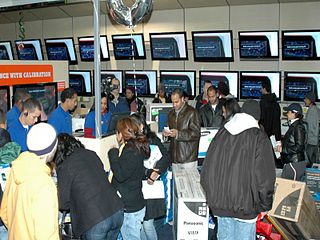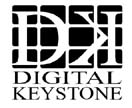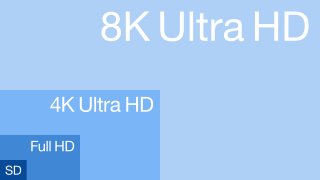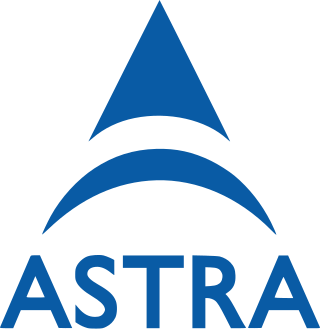
Microsoft Corporation is an American multinational corporation and technology company headquartered in Redmond, Washington. Microsoft's best-known software products are the Windows line of operating systems, the Microsoft 365 suite of productivity applications, and the Edge web browser. Its flagship hardware products are the Xbox video game consoles and the Microsoft Surface lineup of touchscreen personal computers. Microsoft ranked No. 14 in the 2022 Fortune 500 rankings of the largest United States corporations by total revenue; and it was the world's largest software maker by revenue in 2022 according to Forbes Global 2000. It is considered one of the Big Five American information technology companies, alongside Alphabet, Amazon, Apple, and Meta.

Nokia Corporation is a Finnish multinational telecommunications, information technology, and consumer electronics corporation, established in 1865. Nokia's main headquarters are in Espoo, Finland, in the Helsinki metropolitan area, but the company's actual roots are in the Tampere region of Pirkanmaa. In 2020, Nokia employed approximately 92,000 people across over 100 countries, did business in more than 130 countries, and reported annual revenues of around €23 billion. Nokia is a public limited company listed on the Nasdaq Helsinki and New York Stock Exchange. It was the world's 415th-largest company measured by 2016 revenues, according to the Fortune Global 500, having peaked at 85th place in 2009. It is a component of the Euro Stoxx 50 stock market index.

Siemens AG is a German multinational technology conglomerate. Its operations encompass automation and digitalization in the process and manufacturing industries, intelligent infrastructure for buildings and distributed energy systems, rail transport solutions, as well as health technology and digital healthcare services. Siemens is the largest industrial manufacturing company in Europe, and holds the position of global market leader in industrial automation and industrial software.

Consumer electronics or home electronics are electronic equipment intended for everyday use, typically in private homes. Consumer electronics include devices used for entertainment, communications and recreation. These products are usually referred to as black goods due to many products being housed in black or dark casings. This term is used to distinguish them from "white goods" which are meant for housekeeping tasks, such as washing machines and refrigerators, although nowadays, these would be considered black goods, some of these being connected to the Internet. In British English, they are often called brown goods by producers and sellers. In the 2010s, this distinction is absent in large big box consumer electronics stores, which sell entertainment, communication and home office devices, light fixtures and appliances, including the bathroom type.

The Consumer Technology Association (CTA) is a standard and trade organization representing 1,376 consumer technology companies in the United States. CTA is led by president and CEO Gary J. Shapiro.

The Proposal for a Directive of the European Parliament and of the Council on the patentability of computer-implemented inventions, procedure number 2002/0047 (COD) was a proposal for a European Union (EU) directive aiming to harmonise national patent laws and practices concerning the granting of patents for computer-implemented inventions, provided they meet certain criteria. The European Patent Office describes a computer-implemented invention (CII) as "one which involves the use of a computer, computer network or other programmable apparatus, where one or more features are realised wholly or partly by means of a computer program".
DigitalLiving Network Alliance (DLNA) is a set of interoperability standards for sharing home digital media among multimedia devices. It allows users to share or stream stored media files to various certified devices on the same network like PCs, smartphones, TV sets, game consoles, stereo systems, and NASs. DLNA incorporates several existing public standards, including Universal Plug and Play (UPnP) for media management and device discovery and control, wired and wireless networking standards, and widely used digital media formats.

1080p is a set of HDTV high-definition video modes characterized by 1,920 pixels displayed across the screen horizontally and 1,080 pixels down the screen vertically; the p stands for progressive scan, i.e. non-interlaced. The term usually assumes a widescreen aspect ratio of 16:9, implying a resolution of 2.1 megapixels. It is often marketed as Full HD or FHD, to contrast 1080p with 720p resolution screens. Although 1080p is sometimes referred to as 2K resolution, other sources differentiate between 1080p and (true) 2K resolution.

HD ready is a certification program introduced in 2005 by EICTA, now DIGITALEUROPE. HD ready minimum native resolution is 720 rows in widescreen ratio.
The Technology and Engineering Emmy Awards, or Technology and Engineering Emmys, are one of two sets of Emmy Awards that are presented for outstanding achievement in engineering development in the television industry. The Technology and Engineering Emmy Awards are presented by the National Academy of Television Arts and Sciences (NATAS), while the separate Primetime Engineering Emmy Awards are given by its sister organization the Academy of Television Arts & Sciences (ATAS).

Blu-ray is a digital optical disc data storage format designed to supersede the DVD format. It was invented and developed in 2005 and released worldwide on June 20, 2006, capable of storing several hours of high-definition video. The main application of Blu-ray is as a medium for video material such as feature films and for the physical distribution of video games for the PlayStation 3, PlayStation 4, PlayStation 5, Xbox One, and Xbox Series X. The name refers to the blue laser used to read the disc, which allows information to be stored at a greater density than is possible with the longer-wavelength red laser used for DVDs.
High-definition television (HDTV) describes a television or video system which provides a substantially higher image resolution than the previous generation of technologies. The term has been used since at least 1933; in more recent times, it refers to the generation following standard-definition television (SDTV). It is currently the standard video format used in most broadcasts: terrestrial broadcast television, cable television, satellite television.

The DTG is the association for British digital television broadcasters and annually publish and maintain the technical specifications for digital terrestrial television (DTT) in the United Kingdom, which is known as the D-Book and is used by Freeview, Freeview HD, FreeSat and YouView. The association consists of over 120 UK and international members who can participate in DTG activities to varying degrees, depending on their category of membership.

Digital Keystone, Inc. is a video technology company, based in Cupertino, California, that develops digital entertainment technologies that bridge Pay TV with the new digital home. DK solutions include security and navigation software. Digital Keystone also develops industry-standard validation tools for development, certification, and manufacturing. DK technologies enable content access throughout the entire home, offering security, interactive services, and device connectivity.

4K resolution refers to a horizontal display resolution of approximately 4,000 pixels. Digital television and digital cinematography commonly use several different 4K resolutions. In television and consumer media, 3840 × 2160 with a 16:9 aspect ratio is the dominant 4K standard, whereas the movie projection industry uses 4096 × 2160.

8K resolution refers to an image or display resolution with a width of approximately 8,000 pixels. 8K UHD is the highest resolution defined in the Rec. 2020 (UHDTV) standard.

SES Astra SA was a corporate subsidiary of SES, based in Betzdorf, in eastern Luxembourg, that maintained and operated the Astra series of geostationary communication satellites between 2001 and 2011.
Rudy Provoost is a Belgian businessman and entrepreneur.
High-resolution audio is a term for audio files with greater than 44.1 kHz sample rate or higher than 16-bit audio bit depth. It commonly refers to 96 or 192 kHz sample rates. However, 44.1 kHz/24-bit, 48 kHz/24-bit and 88.2 kHz/24-bit recordings also exist that are labeled HD Audio.

Ultra-high-definition television today includes 4K UHD and 8K UHD, which are two digital video formats with an aspect ratio of 16:9. These were first proposed by NHK Science & Technology Research Laboratories and later defined and approved by the International Telecommunication Union (ITU).













